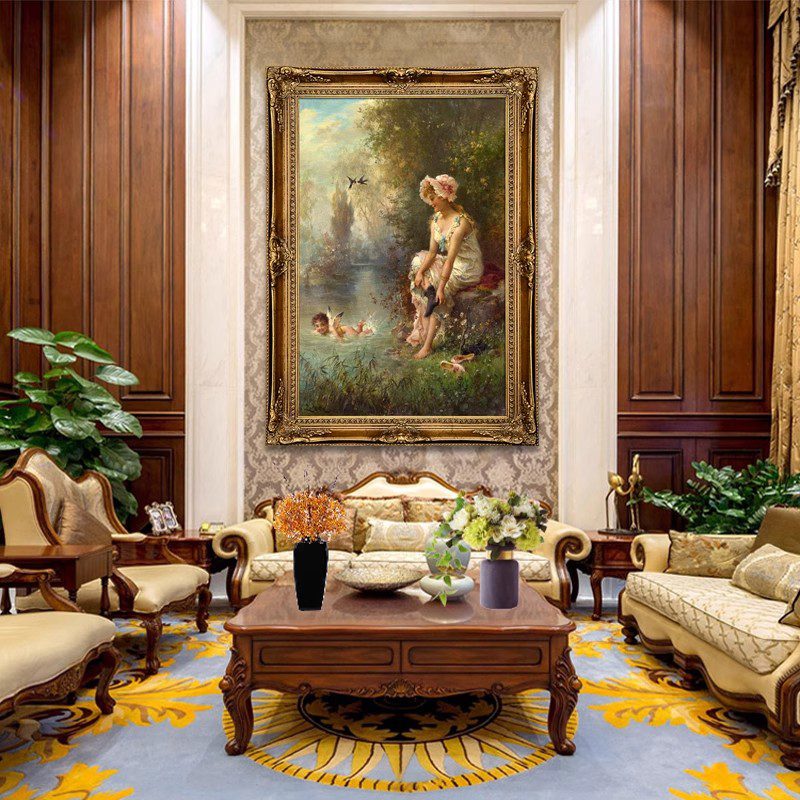Blending Traditional and Contemporary Elements in Hand-Painted Oil Artworks
The fusion of traditional and modern artistic approaches in hand-painted oil art creates a dialogue between historical techniques and contemporary sensibilities. This hybrid style allows artists to honor classical methods while embracing innovation, resulting in works that feel both timeless and relevant. Below, we explore how to achieve this balance through material experimentation, thematic exploration, and stylistic integration.
Reinterpreting Classical Techniques Through a Modern Lens
Traditional oil painting relies on established practices like glazing, impasto, and chiaroscuro, which have defined art history for centuries. Modern artists can reinvigorate these methods by altering their context or combining them with unconventional tools.
- Subvert glazing techniques by applying transparent layers over non-traditional surfaces. Instead of building depth on a white canvas, experiment with colored grounds or textured substrates like burlap or metal. The interplay between the base and translucent paint creates unexpected color shifts, merging old-world patience with new-world unpredictability.
- Use impasto selectively to highlight emotional intensity. Classical portraits often used thick paint for facial features to emphasize realism, but modern artists might reserve impasto for abstract elements—such as swirling skies or fragmented bodies—to contrast with smooth, controlled areas. This juxtaposition draws attention to the tension between order and chaos.
- Reimagine chiaroscuro with artificial light sources. Traditional studies of light and shadow relied on natural sunlight or candles, but contemporary works can incorporate neon signs, LED strips, or digital screens as light emitters. This shift updates the dramatic contrasts of the Baroque era while commenting on modern technology’s role in shaping perception.
Integrating Contemporary Themes into Time-Honored Subjects
Modern relevance often hinges on addressing current societal concerns or personal narratives. By infusing classical subjects with contemporary themes, artists bridge the gap between past and present.
- Depict modern figures in historical costumes to critique or celebrate cultural identity. For example, a portrait of a person in traditional Renaissance attire might hold a smartphone or wear sneakers, subtly questioning how history influences present-day self-perception. The background could blend classical architecture with graffiti or digital patterns.
- Reinterpret mythological scenes through a feminist or environmental lens. A modern retelling of a Greek myth could feature female figures in positions of power, surrounded by symbols of ecological collapse (e.g., wilting flowers, melting ice). Using oil paint’s richness to depict these elements adds emotional weight to the critique.
- Explore urban decay or construction as metaphors for transience. Traditional still lifes often focused on perishable items like fruit or flowers to symbolize mortality, but contemporary artists might paint abandoned buildings, rusting machinery, or half-finished skyscrapers. The slow drying time of oils allows for meticulous rendering of textures like peeling paint or cracked concrete, emphasizing decay’s inevitability.
Experimenting With Material Hybridity and Unconventional Tools
The physicality of oil paint encourages exploration beyond brushes and palettes. Combining traditional pigments with modern additives or tools can yield innovative textures and effects.
- Incorporate non-art materials into the painting process. Artists might embed fabric scraps, sand, or even small objects (like buttons or wires) into wet oil layers to create tactile relief. This approach echoes the collage techniques of 20th-century movements like Cubism while maintaining the depth and luminosity of oils.
- Use digital tools for preliminary sketches. While the final work remains hand-painted, drafting compositions on tablets or using photo-editing software to test color palettes can streamline decision-making. This blend of analog and digital workflows reflects how technology has become inseparable from modern creativity.
- Experiment with solvent-free techniques. Traditional oil painting often involves turpentine or mineral spirits, but modern artists might explore water-mixable oils or natural alternatives like linseed oil and citrus-based thinners. These choices reduce toxicity while allowing for cleaner layering and faster drying times, enabling quicker iteration—a nod to contemporary art’s emphasis on process over perfection.
Navigating the Tension Between Authenticity and Innovation
Fusing traditional and modern elements requires balancing respect for historical methods with a desire to push boundaries. Artists must avoid superficial combinations by grounding their choices in intentionality.
- Study art history to inform decisions. Understanding why certain techniques were developed (e.g., the use of gesso in Renaissance panels or the invention of tubular paint in the 19th century) helps artists adapt them purposefully. For instance, knowing that impasto was originally used to mimic marble’s texture can inspire new ways to represent modern materials like plastic or glass.
- Embrace “mistakes” as catalysts for creativity. Traditional training often emphasizes control, but modern art values spontaneity. Allowing paint to drip, crack, or blend unexpectedly can lead to discoveries that bridge the gap between accidental and deliberate. This mindset aligns with contemporary movements like Abstract Expressionism, which prioritized emotional truth over technical precision.
- Engage audiences through layered narratives. A painting that combines a classical portrait style with hidden QR codes or augmented reality triggers invites viewers to interact physically and digitally. This multidimensional approach reflects how modern audiences consume art—not just as static objects but as gateways to broader stories.
By merging time-tested techniques with contemporary themes and materials, artists create hand-painted oil works that resonate across generations. This fusion is not merely aesthetic but philosophical, challenging viewers to reconsider how history informs the present and how tradition can evolve to meet future demands.
